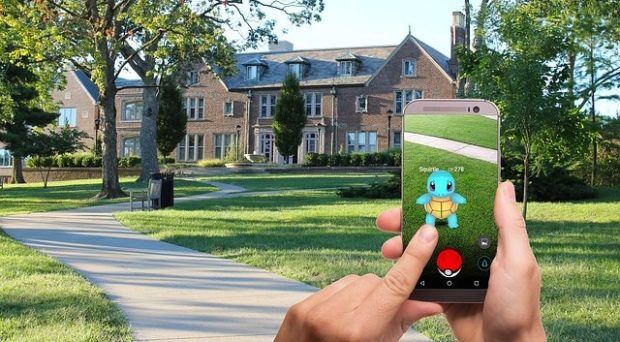EPJ Data Science Highlight - Out in the city with Pokémon Go
- Details
- Published on 16 October 2017

In the summer of 2016 Pokémon Go took the world by storm. Millions of people across the globe descended on their streets, searching their neighbourhoods for monsters. Much has been reported on the health benefits that players gained from using the app; now, research published in EPJ Data Science explores how Pokémon Go was able to change the pulse of a city, encouraging people to use areas in ways they didn't previously.
(Guest post by Eduardo Graells-Garrido, originally published on SpringerOpen blog
The success of Pokémon Go is undeniable. People of all ages and everywhere in the world were using their mobile phones to go around their cities trying to catch the next pocket monster. But “PoGo” had an interesting, perhaps unintended, side-effect: not only did the game let you catch Pokémon in an augmented reality (AR) environment, it also motivated players to walk more and meet new people.
This particular effect inspired a body of research on several other kinds of benefits of Pokémon Go, but mostly at the individual level. So far, little has been said about how “PoGo” might influence a whole city, its pulse, in a way, understood as the continuous flow of people on the streets.
PoGo was launched on August, 2016, and five days after its launch more than one million Chileans had downloaded the game. That’s a lot considering that Chile has a population of 17 million. After seeing the frenzy for game in Chile, we studied an anonymized dataset of approx. 100,000 mobile phone users from Santiago, Chile’s capital city, where around 40% of the whole population of Chile live.
We aggregated user connections at the level of mobile phone towers, and, put simply, we counted the number of connections in different areas of the city during the day, regardless of whether people were playing the game or not. Using time-series and statistical models, we compared the week before and the week after the launch of PoGo. We wanted to see whether there was a change in the number of people connected to the mobile phone network or not.
Long story short, yes, we did find an effect. Interestingly, the effect was strongest at two specific times of day, where our method found significantly more connections. First, people took advantage of commuting times and breaks during the day to play. Second, at night people tended to go out more, and visit places near their homes after having dinner. This is remarkable because many areas of Santiago are perceived as dangerous.
So, PoGo players walked more and gathered at parks and public places, even at night. From this point of view, it doesn’t matter whether people on the streets play PoGo or not – what really mattered was that people went out, while before they didn’t, either because of lack of interest or because of safety.
Still, the bigger question still remained: how did an augmented reality game alleviate this problem? Public policies, after all, have been far from successful in the past. There is a theoretical concept that helps understand why Pokémon Go worked when other policies had failed: the concept of “third places”. Defined by Ray Oldenburg in his book The Great Good Place as “places where individuals may come and go as they please, in which no one is required to play host, and in which we all feel at home and comfortable” was, we believe, key in making PoGo work.
If we think of home and work (or study) as the first and second places in one’s own life, the streets are not really a third place per-se, due to their transitory status. Pokémon Go effectively changed that, making them interesting and purposeful by providing PokéStops, allowing its players to see and talk to fellow players on topics of mutual interest, and, by extension, to people who joined the players, such as parents watching their kids play the game.
Even more, Pokémon Go helped increase the number of pedestrians on the street, which is one of the conditions that must be met by a city to be lively and safe, according to Jane Jacobs. So, at least for a while, and surprisingly when compared to other formal attempts, an AR game transformed the entire city into a third place, making it safer and more social- at no cost for the city at all!





